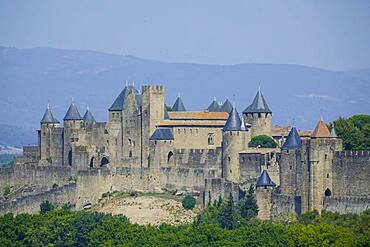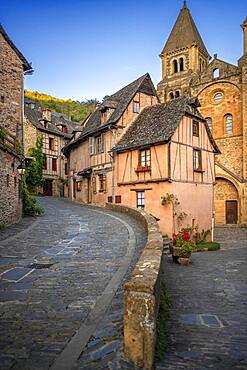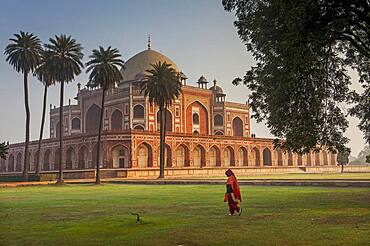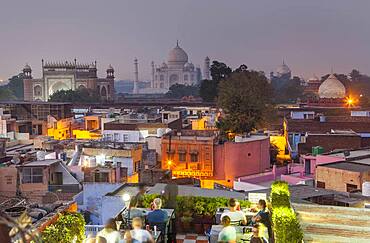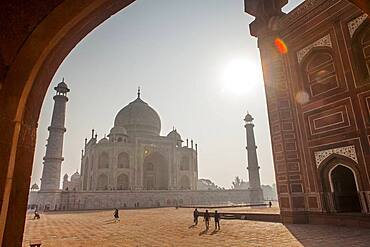Recent searches
Loading...
1350-3481 - Castle of Xavier, the birthplace of Saint Francis Xavier. Navarre, Spain, Europe
1350-2688 - Verges, a small town in the Northeast of Catalonia (Spain), during Easter celebrates the Procession of Verges with skeletons dancing on the sound of a drum, Roman soldiers, known as the 'Manages', and a representation of the life and crucifixion of Jesus Christ. The Procession features the Dance of Death, a tradition from the Middle Age associated with epidemics and plagues and the only one remaining in Spain Ten skeletons dance to the beat of a drum to remember that no one is exempt of death. The backdrop of the medieval walls and towers of Verges is key to this macabre staging.
1350-2693 - Verges, a small town in the Northeast of Catalonia (Spain), during Easter celebrates the Procession of Verges with skeletons dancing on the sound of a drum, Roman soldiers, known as the 'Manages', and a representation of the life and crucifixion of Jesus Christ. The Procession features the Dance of Death, a tradition from the Middle Age associated with epidemics and plagues and the only one remaining in Spain Ten skeletons dance to the beat of a drum to remember that no one is exempt of death. The backdrop of the medieval walls and towers of Verges is key to this macabre staging.
1350-2692 - Verges, a small town in the Northeast of Catalonia (Spain), during Easter celebrates the Procession of Verges with skeletons dancing on the sound of a drum, Roman soldiers, known as the 'Manages', and a representation of the life and crucifixion of Jesus Christ. The Procession features the Dance of Death, a tradition from the Middle Age associated with epidemics and plagues and the only one remaining in Spain Ten skeletons dance to the beat of a drum to remember that no one is exempt of death. The backdrop of the medieval walls and towers of Verges is key to this macabre staging.
1350-2695 - Verges, a small town in the Northeast of Catalonia (Spain), during Easter celebrates the Procession of Verges with skeletons dancing on the sound of a drum, Roman soldiers, known as the 'Manages', and a representation of the life and crucifixion of Jesus Christ. The Procession features the Dance of Death, a tradition from the Middle Age associated with epidemics and plagues and the only one remaining in Spain Ten skeletons dance to the beat of a drum to remember that no one is exempt of death. The backdrop of the medieval walls and towers of Verges is key to this macabre staging.
1350-2690 - Verges, a small town in the Northeast of Catalonia (Spain), during Easter celebrates the Procession of Verges with skeletons dancing on the sound of a drum, Roman soldiers, known as the 'Manages', and a representation of the life and crucifixion of Jesus Christ. The Procession features the Dance of Death, a tradition from the Middle Age associated with epidemics and plagues and the only one remaining in Spain Ten skeletons dance to the beat of a drum to remember that no one is exempt of death. The backdrop of the medieval walls and towers of Verges is key to this macabre staging.
1350-2691 - Verges, a small town in the Northeast of Catalonia (Spain), during Easter celebrates the Procession of Verges with skeletons dancing on the sound of a drum, Roman soldiers, known as the 'Manages', and a representation of the life and crucifixion of Jesus Christ. The Procession features the Dance of Death, a tradition from the Middle Age associated with epidemics and plagues and the only one remaining in Spain Ten skeletons dance to the beat of a drum to remember that no one is exempt of death. The backdrop of the medieval walls and towers of Verges is key to this macabre staging.
1350-2687 - Verges, a small town in the Northeast of Catalonia (Spain), during Easter celebrates the Procession of Verges with skeletons dancing on the sound of a drum, Roman soldiers, known as the 'Manages', and a representation of the life and crucifixion of Jesus Christ. The Procession features the Dance of Death, a tradition from the Middle Age associated with epidemics and plagues and the only one remaining in Spain Ten skeletons dance to the beat of a drum to remember that no one is exempt of death. The backdrop of the medieval walls and towers of Verges is key to this macabre staging.
1350-2689 - Verges, a small town in the Northeast of Catalonia (Spain), during Easter celebrates the Procession of Verges with skeletons dancing on the sound of a drum, Roman soldiers, known as the 'Manages', and a representation of the life and crucifixion of Jesus Christ. The Procession features the Dance of Death, a tradition from the Middle Age associated with epidemics and plagues and the only one remaining in Spain Ten skeletons dance to the beat of a drum to remember that no one is exempt of death. The backdrop of the medieval walls and towers of Verges is key to this macabre staging.
1350-2696 - Verges, a small town in the Northeast of Catalonia (Spain), during Easter celebrates the Procession of Verges with skeletons dancing on the sound of a drum, Roman soldiers, known as the 'Manages', and a representation of the life and crucifixion of Jesus Christ. The Procession features the Dance of Death, a tradition from the Middle Age associated with epidemics and plagues and the only one remaining in Spain Ten skeletons dance to the beat of a drum to remember that no one is exempt of death. The backdrop of the medieval walls and towers of Verges is key to this macabre staging.
1350-2697 - Verges, a small town in the Northeast of Catalonia (Spain), during Easter celebrates the Procession of Verges with skeletons dancing on the sound of a drum, Roman soldiers, known as the 'Manages', and a representation of the life and crucifixion of Jesus Christ. The Procession features the Dance of Death, a tradition from the Middle Age associated with epidemics and plagues and the only one remaining in Spain Ten skeletons dance to the beat of a drum to remember that no one is exempt of death. The backdrop of the medieval walls and towers of Verges is key to this macabre staging.
1350-2694 - Verges, a small town in the Northeast of Catalonia (Spain), during Easter celebrates the Procession of Verges with skeletons dancing on the sound of a drum, Roman soldiers, known as the 'Manages', and a representation of the life and crucifixion of Jesus Christ. The Procession features the Dance of Death, a tradition from the Middle Age associated with epidemics and plagues and the only one remaining in Spain Ten skeletons dance to the beat of a drum to remember that no one is exempt of death. The backdrop of the medieval walls and towers of Verges is key to this macabre staging.
1184-6082 - Medieval town in the Gruyere Castle, Fribourg, Switzerland, Europe
1184-6079 - Medieval town in the Gruyere Castle, Fribourg, Switzerland, Europe
1184-6081 - Medieval town in the Gruyere Castle, Fribourg, Switzerland, Europe
1178-35654 - High angle view of waterfront cityscape
1351-70 - A typical medieval alley in Narni's old town, with a view of the bell tower of the Cathedral, Narni, Umbria, Italy, Europe
1351-69 - A typical medieval alley in Narni's old town, with a view of the bell tower of the Cathedral, Narni, Umbria, Italy, Europe
1351-67 - Aerial view of the medieval village of Montefalco, Umbria, Italy, Europe
1351-50 - Perugia's Aqueduct street with its famous bridge as seen from an alley, Perugia, Umbria, Italy, Europe
1351-44 - Perugia's Aqueduct street with its famous bridge, Perugia, Umbria, Italy, Europe
1351-49 - A couple walking in Perugia's Aqueduct street with the cityscape in the back at sunset, Perugia, Umbria, Italy, Europe
1351-45 - Perugia's Aqueduct street with its famous bridge, Perugia, Umbria, Italy, Europe
801-3037 - Medieval Roloi Clock Tower, Rhodes Old Town, Rhodes, Dodecanese Island Group, Greek Islands, Greece, Europe
832-393114 - Swedish house with thatched roof built in 1554, small farmhouse in late medieval architectural style, today in the Franconian Open Air Museum, Bad Windsheim, Middle Franconia, Bavaria, Germany, Europe
832-393160 - A yellow ""X"", symbol of resistance against nuclear waste transports in the Wendland, on a farm gate in the Rundlingsdorf Kuesten, district of Luechow-Dannenberg, Lower Saxony, Germany, Europe
832-392645 - Relief Jesus on the Mount of Olives 15th century, at St Marienkirche, Sulzbach-Rosenberg, Upper Palatinate Bavaria, Germany, Europe
832-393171 - Old milk can in the village center of the Rundlingsdorf Luebeln, county Luechow-Dannenberg, Wendland, Lower Saxony, Germany, Europe
832-392947 - Castle Rabeneck, former high medieval noble castle at the valley of the Wiesent, near Oberrailsfeld, district of Waischenfeld, Franconian Switzerland, nature park Park Franconian Switzerland-Veldenstein Forest, Upper Franconia, Bavaria, Germany, Europe
832-393174 - The Rundlingsdorf Satemin is one of the 19 Rundlings villages that have applied to become a UNESCO World Heritage Site. Satemin, Lower Saxony, Germany, Europe
832-392146 - Twilight over medieval village Giglio Castello, Giglio Island, Tuscany, Italy, Europe
832-393113 - Swedish house built in 1554, small farmhouse in late medieval style, old wicker fence in front, Franconian Open Air Museum, Bad Windsheim, Middle Franconia, Bavaria, Germany, Europe
832-393231 - Medieval old town, Cite de Carcassonne fortress, UNESCO World Heritage Site, seen from the Belvedere d'Auriac rest area on the A61 motorway, Aude department, Occitanie region, southern France, France, Europe
832-393170 - Rundlingsmuseum Wendland (detail of the half-timbered building) in the Rundlingsdorf Luebeln, district Luechow-Dannenberg, Lower Saxony, Germany, Europe
832-393172 - Half-timbered house in the Rundlingsdorf Luebeln, Luechow-Dannenberg district, Wendland, Lower Saxony, Germany, Europe
832-393159 - Two milk cans are standing on a table in front of the village oak in the centre of the Rundlingsdorf Kuesten, district of Luechow-Dannenberg, Wendland, Lower Saxony, Germany, Europe
832-393072 - River Adige with the stone bridge Ponte Scaligero, Verona, Veneto, Italy, Europe
832-392119 - Koutoubia mosque from 12th century in old town of Marrakech, Morocco, Africa
832-393071 - Padlocks as a sign of solidarity on the Ponte Scaligero bridge, Verona, Veneto, Italy, Europe
832-393070 - River Adige with Ponte della Vittoria, Ponte Scaligero, Verona, Veneto, Italy, Europe
832-393112 - Swedish house, built in 1554, small farmhouse in late medieval architectural style, Franconian Open Air Museum, Bad Windsheim, Middle Franconia, Bavaria, Germany, Europe
832-392118 - Koutoubia mosque from 12th century in old town of Marrakech, Morocco, Africa
1178-32032 - Italy, Tuscany, Val D'Orcia, Pienza, Stone buildings in old town
1178-31965 - Italy, Tuscany, Val D'Orcia, Pienza, Medieval town on hill
1178-32057 - Italy, Tuscany, San Gimignano, Medieval towers and buildings
1178-32053 - Italy, Tuscany, Pisa, Basilica of Saint Francis of Assisi
1178-31961 - Italy, Piemonte, Lake Maggiore, Cannobio, Silhouette of Castle of Cannero on Lake Maggiore at sunset
1178-32034 - Italy, Tuscany, Val D'Orcia, Pienza, Stone buildings in old town
1178-32012 - France, Provence, Sisteron, Rocher de la Baume mountain with village near Durance river
1178-32033 - Italy, Tuscany, Val D'Orcia, Pienza, Stone buildings in old town
1178-32056 - Italy, Tuscany, Pisa, Pisa Cathedral and Leaning Tower
1178-32054 - Italy, Tuscany, Pisa, Leaning Tower of Pisa
1178-32051 - Italy, Tuscany, Val D'Orcia, Pienza, Narrow alley and illuminated buildings in old town at dusk
1178-32031 - Italy, Tuscany, Val D'Orcia, Pienza, Stone buildings in old town
832-391544 - Roman arena amphitheatre with preserved medieval tower, Arles, Bouches-du-Rhone department, Provence Alpes Cote d'Azur region, Mediterranean Sea, France, Europe
832-391599 - Water puddle, Mingrelia and Upper Vanetia Ushguli, Georgia, Asia
832-391603 - Village view, Mingrelia and Upper Vanetia Ushguli, Georgia, Asia
1350-2253 - Street in the medieval town of Collioure in the south of France Languedoc-Roussillon Cote Vermeille Midi Pyrenees Occitanie Europe
1350-2286 - Medieval town of Cordes sur Ciel, labelled The Most Beautiful Villages of France, Tarn, Occitanie, France
1350-996 - Taj Mahal, UNESCO World Heritage Site, Agra, Uttar Pradesh, India
1350-1728 - Castell y Bere, Dysynni Valley, Gwynedd, Wales
1350-2267 - Fortified City of Carcassonne, medieval city listed as World Heritage by UNESCO, harboure d'Aude, Languedoc-Roussillon Midi Pyrenees Aude France
1350-2259 - Typical boats and Notre-Dame-des-Anges church and landscape seaside beach of the picturesque village of Collioure, near Perpignan at south of France Languedoc-Roussillon Cote Vermeille Midi Pyrenees Occitanie Europe
1350-1721 - Cardiff Castle, Banquet Hall, Cardiff, Wales
1350-2254 - Landscape seaside beach of the picturesque village of Collioure, near Perpignan at south of France Languedoc-Roussillon Cote Vermeille Midi Pyrenees Occitanie Europe
1350-1722 - Cardiff Castle, stained glass window, in Banquet Hall, Cardiff, Wales
1350-2265 - Fortified City of Carcassonne, medieval city listed as World Heritage by UNESCO, harboure d'Aude, Languedoc-Roussillon Midi Pyrenees Aude France
1350-2294 - Aerial view of Carcassonne, medieval city listed as World Heritage by UNESCO, harboure d'Aude, Languedoc-Roussillon Midi Pyrenees Aude France
1350-2281 - The small medieval village of Conques in France. It shows visitors its abbey-church and clustered houses topped by slate roofs. Crossing of narrow streets and monolith to the fallen ones in the war in the old medieval village of Conques on coats of the river Dordou
1350-2280 - The small medieval village of Conques in France. It shows visitors its abbey-church and clustered houses topped by slate roofs. Crossing of narrow streets and monolith to the fallen ones in the war in the old medieval village of Conques on coats of the river Dordou
1350-737 - Clock tower on Schlossberg, castle hill, Graz, Austria
1350-2264 - Fortified City of Carcassonne, medieval city listed as World Heritage by UNESCO, harboure d'Aude, Languedoc-Roussillon Midi Pyrenees Aude France
1350-2256 - Royal castle of Collioure and landscape seaside beach of the picturesque village of Colliure, near Perpignan at south of France Languedoc-Roussillon Cote Vermeille Midi Pyrenees Occitanie Europe
1350-2258 - Notre-Dame-des-Anges church and landscape seaside beach of the picturesque village of Collioure, near Perpignan at south of France Languedoc-Roussillon Cote Vermeille Midi Pyrenees Occitanie Europe
1350-2261 - Bars and restaurants in the main street in the medieval town of Collioure in the south of France Languedoc-Roussillon Cote Vermeille Midi Pyrenees Occitanie Europe
1350-2289 - Saint Guilhem le Desert, labelled Les Plus Beaux Villages de France (The Most Beautiful Villages of France), a stop on el Camino de Santiago, Herault, France. Street scene of St Guilhem le Desert, pedestrian road with old historical houses on both side. St-Guilhem, France.
1350-2255 - Royal castle of Collioure and landscape seaside beach of the picturesque village of Colliure, near Perpignan at south of France Languedoc-Roussillon Cote Vermeille Midi Pyrenees Occitanie Europe
1350-2263 - View of the watchtower at Gruissan in Languedoc-Roussillon, France, Aude, Gruissan, village in Circulade testifies of a Medieval origin, strategic sign of defense and Christian symbol
1350-2285 - Medieval town of Cordes sur Ciel, labelled The Most Beautiful Villages of France, Tarn, Occitanie, France
1350-995 - Taj Mahal, UNESCO World Heritage Site, Agra, Uttar Pradesh, India
1350-2309 - Aerial view Saint Guilhem le Desert, labelled Les Plus Beaux Villages de France (The Most Beautiful Villages of France), a stop on el Camino de Santiago, Herault, France.
1350-2252 - Street in the medieval town of Collioure in the south of France Languedoc-Roussillon Cote Vermeille Midi Pyrenees Occitanie Europe
1350-2308 - Pont du Diable, the Devil's Bridge, over Hérault River, near Saint Guilhem le Désert, Hérault, Languedoc Roussillon. Saint Jean de Fos, the Pont du Diable over the Herault river on the Routes of Santiago de Compostela, listed as World Heritage by UNESCO, Herault, France.
1350-1720 - Cardiff Castle, detail of mosaic in the Nursery; representation of Robinhood and his companions, Cardiff, Wales
1350-1726 - Norman Keep, Cardiff Castle, Cardiff, Wales
1350-1000 - Taj Mahal, from Yamuna river, UNESCO World Heritage Site, Agra, Uttar Pradesh, India
1350-2295 - Aerial view of Carcassonne, medieval city listed as World Heritage by UNESCO, harboure d'Aude, Languedoc-Roussillon Midi Pyrenees Aude France
1350-2284 - Medieval town of Cordes sur Ciel, labelled The Most Beautiful Villages of France, Tarn, Occitanie, France
1350-1727 - Castell y Bere, Dysynni Valley, Gwynedd, Wales
1350-2257 - Notre-Dame-des-Anges church and landscape seaside beach of the picturesque village of Collioure, near Perpignan at south of France Languedoc-Roussillon Cote Vermeille Midi Pyrenees Occitanie Europe
1350-998 - Exterior wall of Taj Mahal, UNESCO World Heritage Site, Agra, Uttar Pradesh, India
1350-997 - Taj Mahal, UNESCO World Heritage Site, Agra, Uttar Pradesh, India
1350-992 - Taj Mahal, UNESCO World Heritage Site, Agra, Uttar Pradesh, India
1350-2260 - Typical boats and Notre-Dame-des-Anges church and landscape seaside beach of the picturesque village of Collioure, near Perpignan at south of France Languedoc-Roussillon Cote Vermeille Midi Pyrenees Occitanie Europe
































